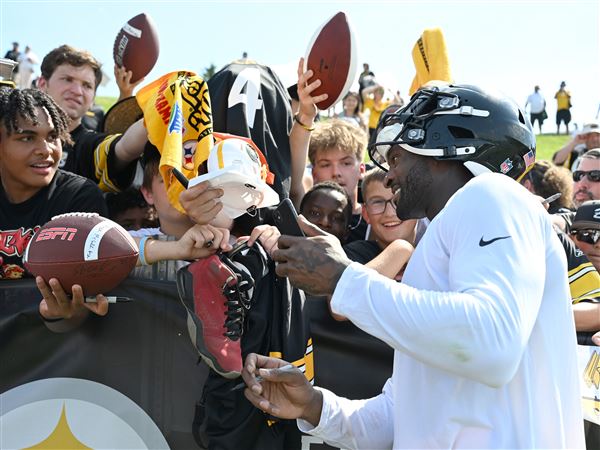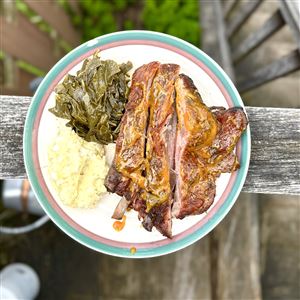Whenever I get bored, I pull out the calculator to figure out how badly Daryle Ward has to hit before he's as poor as Randall Simon.
Ward has tailed off in June with the rest of the Pirates, but, going into a game against the Texas Rangers last night, he still needed to go 0 for 143 for his .624 slugging percentage to drop as low as Simon's .246. Maybe it's me, but I find this hilarious.
Ward should be a fixture at first base but, in order to play Simon, the Pirates have made a poor defensive outfield worse by moving the slow-footed Ward to right field. Meantime, general manager David Littlefield waits for that call from some team seeking a cheery, poor-hitting, poor-fielding, slow-running first baseman most famous for knocking down a giant running sausage.
To be fair, Simon has not always been atrocious. He never should have been signed for $800,000, but he did have respectable old-style numbers -- .276, 16 home runs, 72 RBIs -- last season. He achieved that largely through a strange but useful quirk: He hit like Manny Ramirez when there was a runner on first base, even as he batted like Roger Cedeno the rest of the time. Take a look.
Simon came to bat a combined 401 times the past three seasons when there was a man on first, on first and second, on first and third, or the bases loaded. Simon hit .337 and slugged .559 in those situations.
When there was no runner on first -- regardless of whether runners were elsewhere -- his numbers were only .269/.386 in 747 at-bats.
With a runner on first, he became a genuine slugger. Simon's home run production nearly doubled, hitting one every 19 AB compared to one every 37 AB the rest of the time.
I discovered this after a computational ordeal not seen since Johannes Kepler worked out his laws of planetary motion. Or at least since Pete Rose tried to figure out his batting average in his head.
The regular critique this column gets on baseballprimer.com prompted this project. I have been publicly fascinated by Simon's consistently high average with runners in scoring position (.332 the past three seasons), a fascination consistently slammed by critics who say that this "clutch hitter'' is a statistical aberration resulting from small sample sizes.
Fine. So forget clutch. Remember that Simon is a left-handed batter who grounds out almost three times for every two flyouts. So when the first baseman holds a runner on, the right side of the infield opens up. He grounds more singles through the hole.
That doesn't explain his power surge, but this might: When a man is on first, the pitcher is more likely to throw strikes. So Simon, a notorious free swinger, gets better balls to hit. Put those together and it makes sense that Simon's man-on/man-off-first ratio is wider than his splits for left-handed and right-handed pitchers (.254/.303).
I haven't found another batter like this, though I've looked. The Angels' Darin Erstad, another left-handed ground-ball hitter, got a batting average bump with a runner on first base (.285 vs. .259 with no one there), but had no power surge.
Oddly, the closest match I could find for Simon bats right-handed. Not surprisingly, the man is not known as a disciplined hitter. During the past three seasons, Jack Wilson hit .231 with nobody on first and .281 with a man there. His slugging rose from .316 to .384. Wilson likely benefited from seeing more strikes in those situations.
OK, that's not much of a sample, but let's imagine that Pirates manager Lloyd McClendon bought the baseball logic. He would want Simon to pinch-hit when there was a runner on first.
Alas, so far this season, Simon hasn't been getting the same mojo from that runner 90 feet up the line. He is batting .259 in 27 AB with a runner on first, which beats the .176 he has hit in the 34 AB with no runner there, but not by enough to excite even me. Never a good pinch-hitter, Simon is 0 for 6 in that role this season, going hitless with a runner on first base three times.
Simon hasn't hit much of anything lately but the postgame buffet table. Of course, it's early. All he has to do is go 32 for 32 with 11 doubles to match Ward in slugging percentage.
First Published: June 8, 2004, 4:00 a.m.














